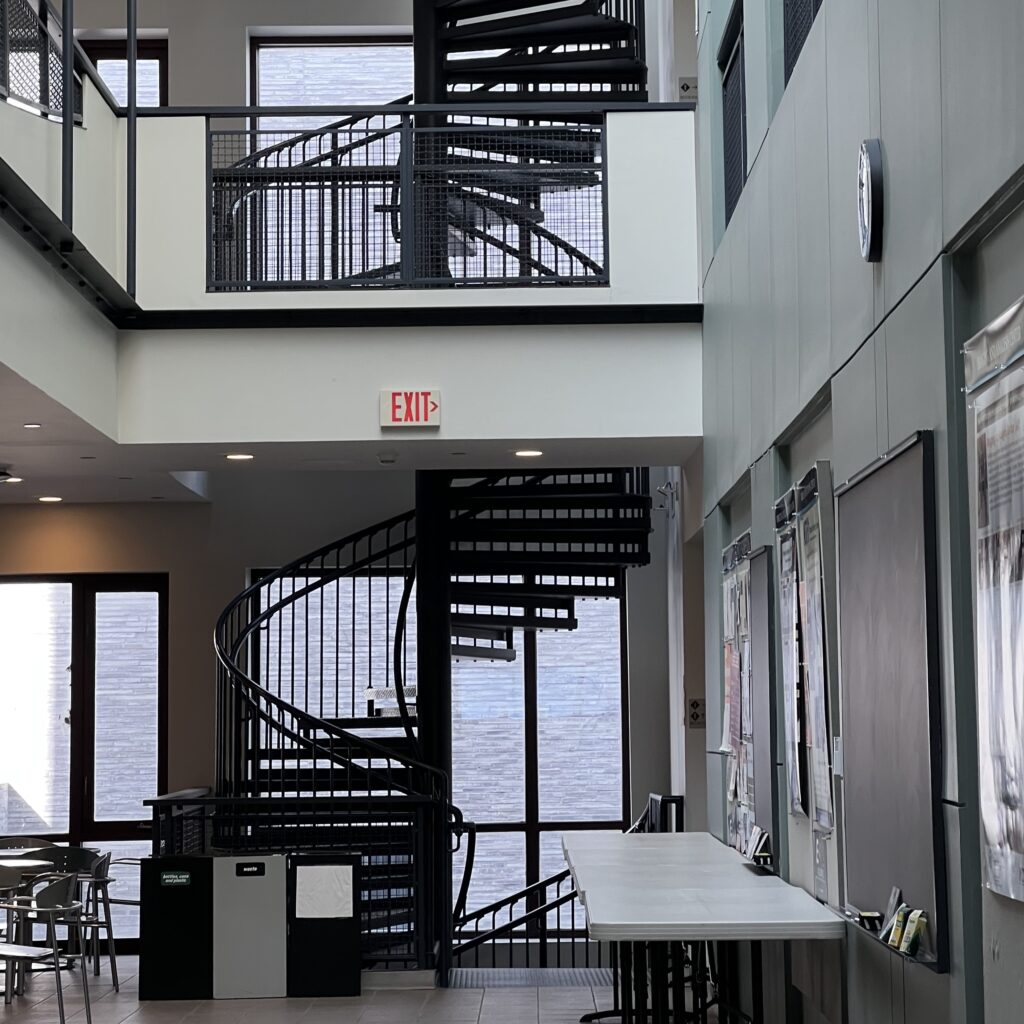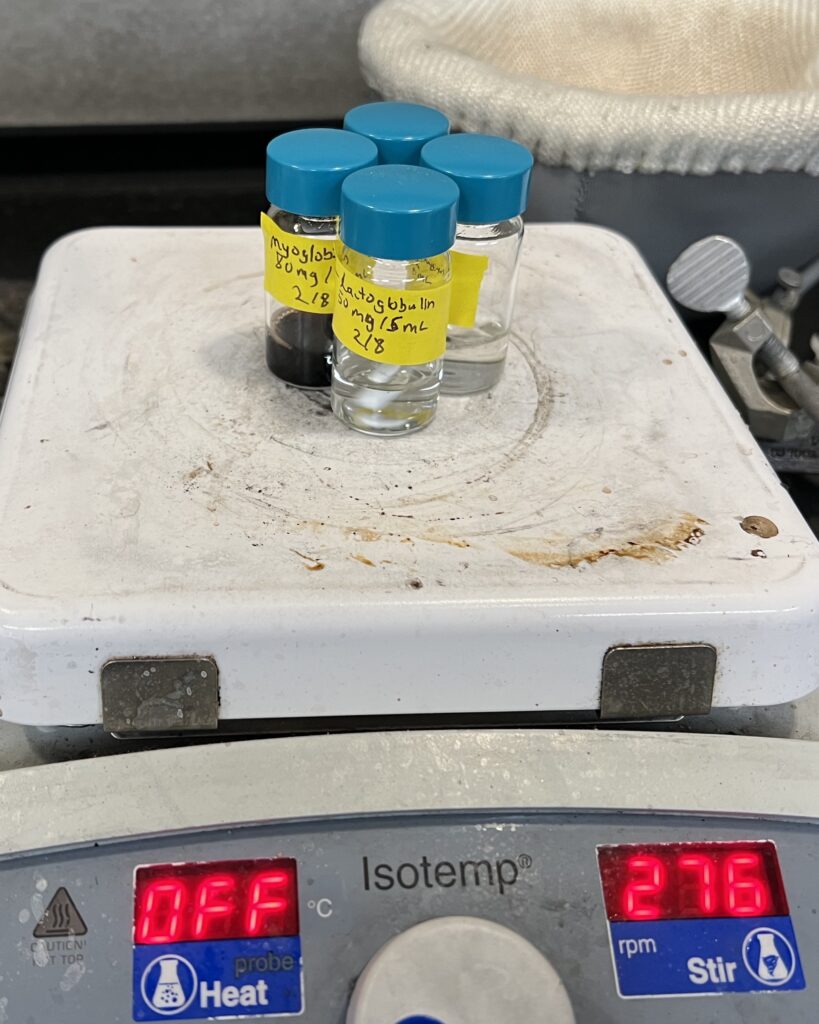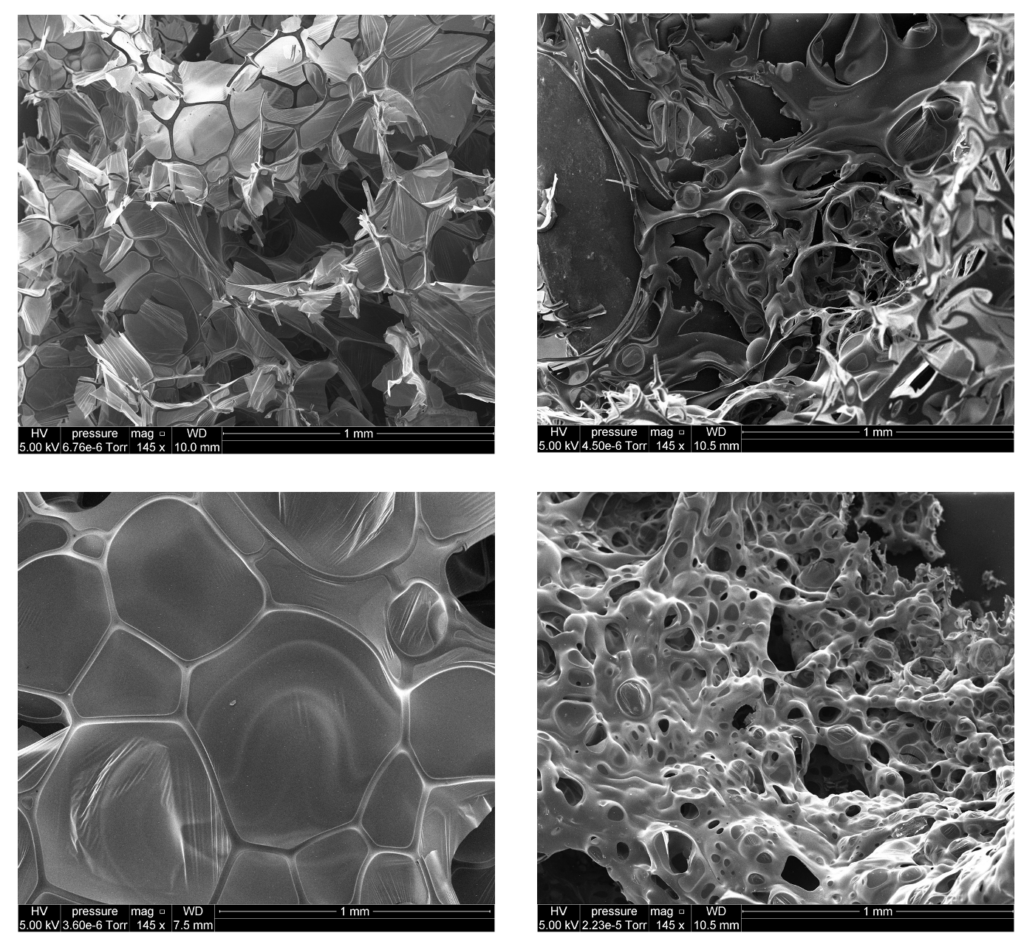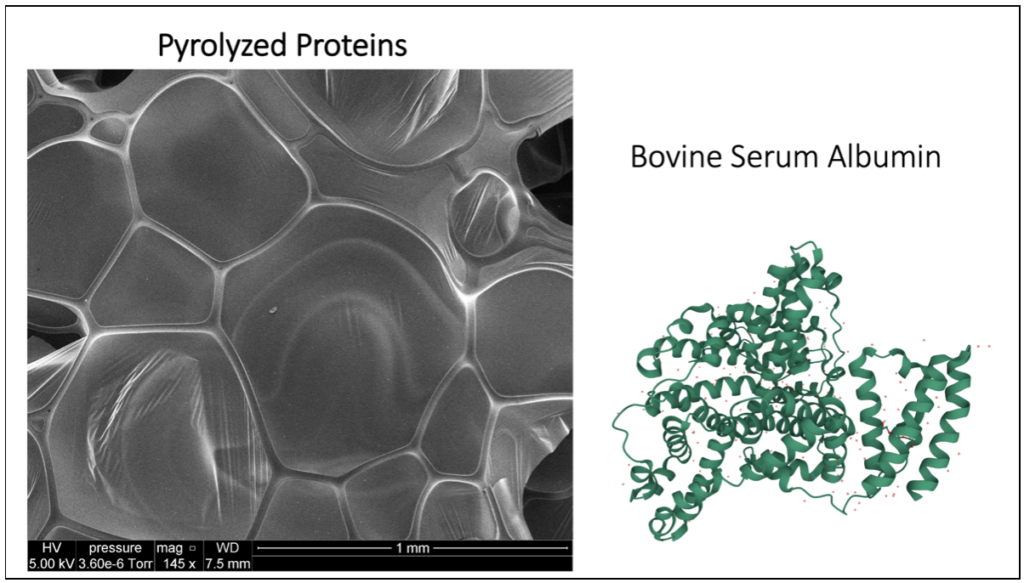This semester, I am doing junior independent work in the Arnold lab group at Princeton, which is based in the MAE department but also focuses on materials science, which is what I am interested in. My project investigates creating graphene aerogels from protein precursors, which basically means that I get to select different proteins of interest, freeze-dry them, pyrolyze them, and then see if they create graphene by examining them under a scanning electron microscope (SEM). These graphene aerogels are interesting materials because of their high porosity and conductivity, making them promising for applications to energy storage, which is why we are interested in researching them.
I thought it might be interesting to highlight a week in my life (well, actually two weeks) to give some insight on what lab-based independent work can look like during the school year. I want to note that this is only my experience as a CBE major, and independent work can look very different for other majors. If you’re an underclassman interested in doing junior independent work or just curious about what that could entail, I hope that this post can provide some insight.

Tuesday, February 8th
I started the week by coming into the lab during lunchtime and making four different protein solutions by dissolving powdered proteins in water and then letting them mix on a stirrer while I went to class in the afternoon (see picture below). Later that day, I gave these solutions to a graduate student in another lab to freeze-dry them because my lab does not have a freeze-drying machine.
Thursday, February 10th
I got my four freeze-dried samples back from the graduate student and put them in my lab in Bowen Hall. I also made an appointment to use the SEM in the Imaging and Analysis Center (IAC) to analyze some of my samples next week.
Monday, February 14th
We had a 10:00 AM lab group meeting, where all the graduate students and undergraduates discussed their progress on their projects. I mentioned that I was planning to use the SEM this week and updated my advisor on my progress so far.
Wednesday, February 16th
I went to the IAC and used the SEM, which I reserved from 9:30 AM to 11:00 AM before my first class of the day. I had eight samples to analyze: four that had already been pyrolyzed and four that had not yet been pyrolyzed. Because of time constraints, I was only able to analyze half of these samples, and I planned to image the rest of the samples later that week. See below for some of the SEM pictures I took.
Friday, February 18th
I went back to the IAC and did SEM imaging on the remaining samples as well as Energy-Dispersive X-Ray Spectroscopy (EDS). I reserved the equipment for two hours in the afternoon, and luckily I was able to finish analysis on all my samples even though the machine was malfunctioning for the first half-hour. After doing this analysis, I realized that the results that I was getting clearly did not support my hypothesis, and I spent an additional hour searching the literature to try to learn more about the mechanism of protein pyrolyzation. In general, it’s completely okay if your data does not support your hypothesis, and it still provides valuable information on your research area even if the results were not what you were expecting.
Monday, February 21st
I presented my research during the 10:00 AM lab meeting (see below for an example of one of my slides showing the SEM image I took next to the 3D model of the relevant protein). During this meeting, I got some great suggestions from my research advisor about specific papers to look at and more analysis techniques to do for these samples. Even though my results seem to be disproving my hypothesis, I am very excited about them because they show that there is more going on in the pyrolysis process than I originally thought, and I am looking forward to doing more analysis to investigate this area of research.
So far, I have really enjoyed doing research in the lab for my junior independent work. Right now, I am mostly in the data-collection phase, although I hope to start writing some of my paper after midterms are over. I also really like the lab group that I am in, and I plan to continue in this lab for my senior thesis work.
–Bridget Denzer, Engineering Correspondent




